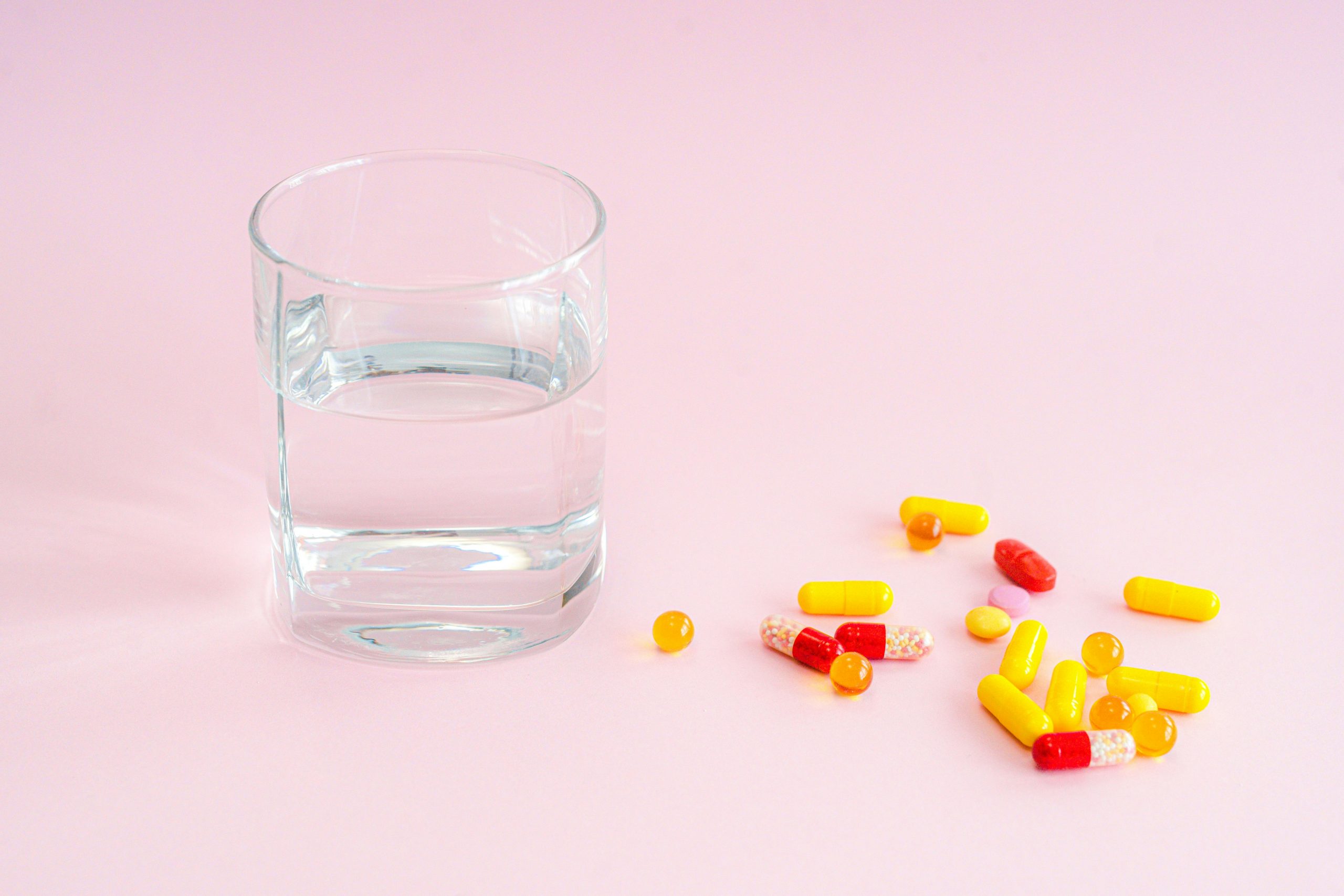Urinary tract infections (UTIs) are an extremely common—and frustrating—health issue that many women will face at some point in their lives. In fact, it’s estimated that nearly 40% of women in the U.S. will develop a UTI at least once, and around 1 in 10 women experience one each year.
The symptoms can strike suddenly and escalate quickly, bringing discomfort, urgency, and disruption to your daily routine. Whether you’re dealing with your first infection or facing recurring episodes, knowing how to get rid of a UTI fast can make all the difference.
This guide breaks down fast-acting remedies, effective treatments, and prevention strategies specifically for women. From early symptom relief to long-term care, we’ll walk you through every step to help you heal quickly—and keep future infections at bay.
- What Is a UTI and Why Does It Happen?
- How to Know If You Have a UTI
- Step 1: Hydrate Aggressively
- Step 2: Try These Fast-Acting Natural Remedies
- Step 3: Use Over-the-Counter Relief for Immediate Comfort
- Step 4: Know When to See a Doctor
- Step 5: Understand How to Get Rid of a UTI Fast With Proper Antibiotic Use
- What Helps a UTI Go Away the Fastest?
- Can You Treat a UTI Without Antibiotics?
- How Long Does a UTI Last?
- How to Prevent UTIs in the Future
- FAQs: Quick Answers About Fast UTI Relief
- The Bottom Line: Fast UTI Relief Starts with Quick Action
What Is a UTI and Why Does It Happen?
A urinary tract infection (UTI) occurs when bacteria enter the urinary system and begin to multiply. While both men and women can experience UTIs, they are far more common in women due to anatomical differences.
The urinary tract includes:
- Urethra – the tube that carries urine out of the body
- Bladder – where urine is stored
- Ureters – tubes connecting kidneys to the bladder
- Kidneys – which filter waste from the blood and produce urine
The most frequent cause of UTIs is Escherichia coli (E. coli), a type of bacteria normally found in the intestines. Although harmless in the gut, it can cause infection when it enters the urinary system.
Why Are Women More Prone to UTIs?
Women have a shorter urethra than men, which means bacteria have a shorter distance to travel to reach the bladder. This makes it easier for bacteria to cause infection. Hormonal changes during menstruation, pregnancy, and menopause can also alter the urinary tract environment and affect bacterial growth.
Common Causes of UTIs in Women:
- Wiping from back to front: This can introduce E. coli from the anus to the urethra.
- Sexual activity: Movement during sex can push bacteria toward the urethra.
- Holding urine for long periods: Gives bacteria time to multiply in the bladder.
- Not urinating after intercourse: Fails to flush out bacteria that may have entered the urethra.
- Use of spermicides or diaphragms: These can alter vaginal flora and promote bacterial growth.
- Hormonal changes: Particularly during menopause, when estrogen levels drop, thinning of the vaginal and urethral walls makes infections more likely.
How to Know If You Have a UTI

Recognizing the symptoms of a UTI early is essential for fast treatment and avoiding complications. While some infections remain mild, others can escalate quickly, especially if left untreated.
Most Common UTI Symptoms:
- Burning sensation while urinating: A hallmark sign of inflammation caused by infection.
- Frequent urge to urinate: You may feel the need to go often but pass very little urine.
- Cloudy, dark, or strong-smelling urine: Changes in appearance and odor may signal an infection.
- Lower abdominal pain or pressure: Discomfort or cramping near the bladder is common.
- Mild fever or chills: A low-grade fever could indicate the infection is spreading beyond the bladder.
- Blood in the urine: This may appear pink, red, or brown and suggests irritation of the urinary tract.
Important: If you’re experiencing these symptoms, especially in combination, begin treatment strategies immediately and monitor your condition closely.
Step 1: Hydrate Aggressively
Why Water Is Essential for UTI Recovery
The simplest and most immediate remedy for a UTI is drinking water—and lots of it. Hydration helps flush bacteria from your bladder before it can multiply or ascend to your kidneys.
Hydration Guidelines:
- Drink at least 8 to 10 full glasses of water daily
- Sip consistently throughout the day rather than all at once
- Avoid bladder irritants like:
- Caffeinated beverages (coffee, soda)
- Alcohol
- Artificial sweeteners
- Sugary drinks
Bonus: Cranberry Juice
While not a cure, unsweetened cranberry juice contains compounds that may help prevent bacteria from adhering to the urinary tract walls. Choose a brand with no added sugar and drink in moderation—1 to 2 glasses per day can be supportive.
Step 2: Try These Fast-Acting Natural Remedies
Natural remedies can help ease discomfort, support your immune system, and prevent future infections. These options are most effective when used at the earliest sign of symptoms.
Effective Natural Remedies:
- D-mannose: A naturally occurring sugar found in cranberries, apples, and oranges. D-mannose attaches to E. coli bacteria and helps flush it out through urination. Available in powder or capsule form.
- Cranberry extract or supplements: More concentrated than juice and free from added sugars. These supplements can help reduce the risk of recurring infections.
- Vitamin C: Taking 500–1000 mg of vitamin C daily can acidify the urine and make it less hospitable for bacterial growth.
- Probiotics: These beneficial bacteria help balance vaginal flora and boost urinary tract defenses. Choose strains like Lactobacillus rhamnosus or Lactobacillus reuteri.
- Warm compress or heating pad: Applying gentle heat to the lower abdomen can help relieve pressure, cramping, or pain.
These remedies are supportive but not a substitute for antibiotics if the infection is progressing.
Step 3: Use Over-the-Counter Relief for Immediate Comfort
While waiting for antibiotics to kick in—or while trying supportive remedies—you can turn to OTC medications for symptom relief.
Fast-Acting OTC Options:
- Phenazopyridine (e.g., AZO, Uristat): A urinary analgesic that provides temporary relief from pain, burning, and urgency. Be aware it may turn your urine orange.
- NSAIDs (e.g., ibuprofen, naproxen): These reduce inflammation and can alleviate pelvic pain or bladder discomfort.
These medications help manage symptoms, but they do not treat the underlying infection.
Step 4: Know When to See a Doctor
Although early-stage UTIs may improve with home care, many cases require medical intervention. A urine sample will confirm bacterial presence and guide treatment decisions.
Signs That You Need Medical Attention:
- Persistent symptoms after 48 hours of self-treatment
- Fever over 100.4°F (38°C)
- Back, flank, or side pain—could indicate a kidney infection
- Nausea or vomiting
- Visible blood in the urine
Infections that reach the kidneys can cause serious complications, including hospitalization. If in doubt, consult a doctor promptly.
Step 5: Understand How to Get Rid of a UTI Fast With Proper Antibiotic Use
Antibiotics are the gold standard treatment for UTIs and are typically effective within a few days. However, how you take them matters.
Commonly Prescribed UTI Antibiotics:
- Nitrofurantoin (Macrobid): Often prescribed for uncomplicated UTIs; typically a 5–7 day course.
- Trimethoprim-sulfamethoxazole (Bactrim): Effective but not suitable for those with sulfa allergies.
- Fosfomycin (Monurol): A single-dose powder that is effective for mild cases.
- Cephalexin (Keflex): A cephalosporin antibiotic, sometimes preferred for pregnant women.
Best Practices:
- Take the full course, even if you feel better early
- Do not skip doses or stop early—this can cause recurrence
- Take with food, if recommended, to avoid stomach upset
What Helps a UTI Go Away the Fastest?

Combining treatment approaches increases your chances of quick relief. The fastest way to get rid of a UTI includes:
- Drinking lots of water to flush bacteria
- Starting antibiotics as soon as symptoms are confirmed
- Using OTC products to manage discomfort
- Adding D-mannose, cranberry, or vitamin C to support healing
- Resting and avoiding bladder irritants like caffeine or alcohol
Most women begin feeling better within 24 to 48 hours of starting treatment, though full resolution typically takes 3–5 days.
Can You Treat a UTI Without Antibiotics?
Some early-stage infections may improve without prescription antibiotics, but it’s a gamble. UTIs can spread quickly and lead to serious complications if untreated.
When Self-Treatment May Be Enough:
- Mild symptoms that started within 24 hours
- No fever, chills, or kidney pain
- No history of recurrent UTIs
- You’re closely monitoring for worsening signs
When to Avoid DIY Treatment:
- You’re pregnant
- You’ve had repeated UTIs
- You have a weakened immune system (e.g., from diabetes or chronic illness)
- Symptoms are getting worse, not better, within 24 hours
If you’re unsure whether to wait or call your doctor, it’s always safer to consult a healthcare provider.
How Long Does a UTI Last?
The length of a UTI varies depending on how early it’s detected and treated.
Typical UTI Timeline:
- Day 1–2: Early symptoms begin (burning, urgency, discomfort)
- Day 2–3: With treatment, symptoms start improving
- Day 4–5: Most women feel significant relief
- Beyond 5 days: Seek medical advice if symptoms persist
Kidney infections or complications can extend recovery to 7–14 days or longer.
How to Prevent UTIs in the Future
Preventing future UTIs means adopting healthy bathroom, sexual, and hygiene habits. Especially if you’ve had more than one infection in a year, prevention should be a priority.
Proven Prevention Tips:
- Wipe front to back every time
- Urinate before and after intercourse
- Avoid holding urine for long periods
- Drink water regularly throughout the day
- Choose breathable cotton underwear
- Avoid tight-fitting pants or non-breathable fabrics
- Steer clear of scented feminine products, including douches, sprays, and soaps
Talk to Your Doctor About:
- Prophylactic antibiotics: Low-dose antibiotics taken after sex or daily to prevent recurrence
- Vaginal estrogen: Helps restore healthy vaginal flora in postmenopausal women
- Regular probiotic use: Balances good bacteria and supports vaginal and urinary health
FAQs: Quick Answers About Fast UTI Relief
How can I get rid of a UTI in 24 hours?
Drink plenty of water, start antibiotics as soon as prescribed, and take OTC pain relievers. Symptoms may begin to improve within 24 hours.
What is the fastest way to flush a UTI?
Hydration is critical. Drink water consistently, add cranberry supplements, and avoid bladder irritants like caffeine and alcohol.
Can a UTI go away on its own?
Sometimes, very mild UTIs may resolve without antibiotics. However, most UTIs require medical treatment to avoid complications.
What drink kills UTI bacteria?
No drink “kills” bacteria, but unsweetened cranberry juice, D-mannose drinks, and lots of water may help flush bacteria from the urinary tract.
When should I go to the ER for a UTI?
If you experience high fever, vomiting, back pain, or signs of a kidney infection, seek emergency care immediately.
The Bottom Line: Fast UTI Relief Starts with Quick Action
When you’re battling a UTI, every hour can feel like a struggle. The key to fast relief is early recognition, smart hydration, and knowing when to get medical help. Home remedies and OTC products can help with comfort, but don’t delay antibiotics if symptoms persist or worsen.
If you frequently deal with UTIs, consider long-term prevention strategies and speak to a healthcare provider about your options.


